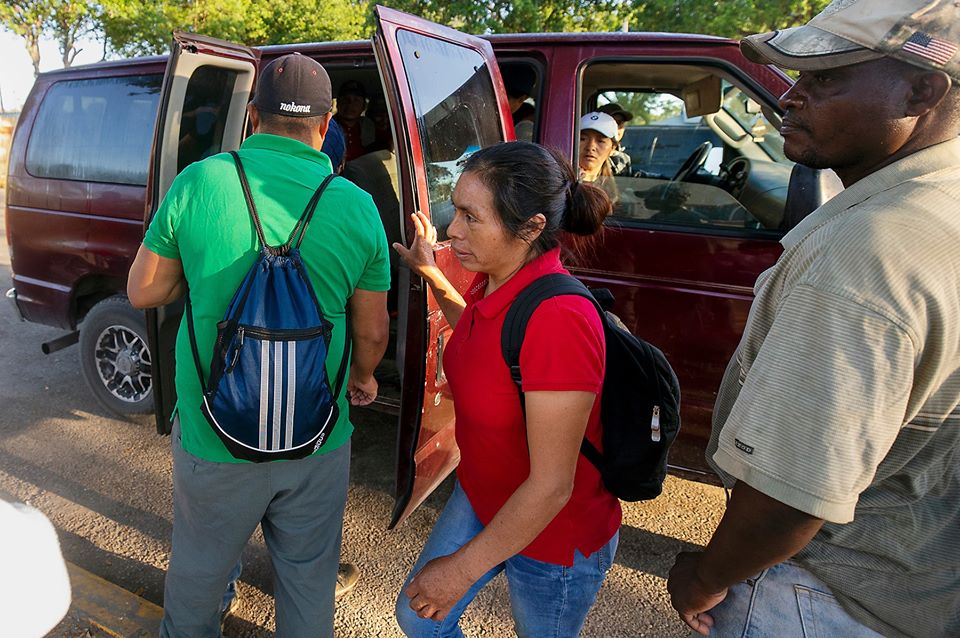
The Florida ZIP code with the greatest number of COVID-19 infections isn’t in Miami-Dade County. Or Broward. Or Palm Beach.
Nestled inland in Collier County, the rural Immokalee community has now seen 1,207 infections, all in the 34142 ZIP code region.
Florida Department of Health geographic data shows troubling signs for a community best known as home to migrant farm workers.
The area has two more residents who tested positive for COVID-19 than in the ZIP code serving Little Havana, 33125.
Certainly, those communities are strikingly different in numerous ways. One area lays in the heart of Miami serving parts of Coral Gables. Miami-Dade County, which houses the Little Havana ZIP code, is home to 23,391 residents who tested positive for the disease caused by the novel coronavirus, about 28% of all infections in Florida.
Collier County, where the Immokalee ZIP code mostly lays, has seen 2,805 residents infected, roughly 3% of Florida cases. Hendry County, where a portion of the ZIP code serves, has seen 700 cases.
The Immokalee area remains less densely populated as a whole, with that postal service area serving more than 586 square miles, most of that far from major highways, beaches or shopping malls. The most recent population estimates say 30,955 people live in the community, around half as many as live in the Little Havana ZIP code.
That means roughly 3.9% of Immokalee residents have contracted COVID-19, about 1 in 25 people who live there.
That also means of all the cases reported so far in Collier and Hendry counties, roughly a third come from one community. It’s one leaders have long worried would be vulnerable to an outbreak.
But Collier County Commissioner William McDaniel remains confident health care facilities can still address the level of infections for the area.
“What we are doing as a community is enhancing the resources,” he said.
Most recently, that includes working in partnership with Horizon Village to set up quarantine housing through the Good Samaritan Health Care statute.
But McDaniel said barriers to containing outbreaks remain as great as ever. That includes limited incomes, language barriers and cultural division.
“And then the biggest barrier of all is documentation,” he said.
He’s encouraged health department leaders to do more follow-up in person to reach those diagnosed with COVID-19. As is, about 15% of individuals who test positive can’t be reached to inform them of the diagnosis. That means likely more community spread.
“A lot of people there cannot afford to have a two-week vacation,” he said. “They can’t go without a paycheck for that time.”
Populated heavily with agricultural workers, the population may not have the density of Miami’s most crowded neighborhoods but large families live in close quarters. Migrant workers frequently load into the backs of trucks or in buses as larger ranches bring in large numbers of day workers.
DeSantis made reference to the conditions as recently as a Wednesday press conference.
“Some of these guys go to work in a school bus, and they are all just packed there like sardines, going across Palm Beach County or some of these other places, and there’s all these opportunities to have transmission,” he said.
The Governor identified Immokalee at the time by name.
Farmworker Association of Florida Executive Director Antonio Tovar told News Service of Florida DeSantis’ office has been too quick to dismiss concerns about infections in farming communities.
“Now he is realizing that foreign workers are more suitable to get infected. That is very shameful because he was advised,” he said.
McDaniel said he tried to keep the problems facing Immokalee in perspective. Seeing more than 1,200 of the nearly 86,000 total cases in Florida coming from one community is concerning, but those are both cumulative numbers from the start of the pandemic in Florida on March 1.
The total cases in Immokalee on June 4, or 14 days ago, was around 800. All of those cases dating back more than two weeks should have recovered from COVID-19 by now and theoretically are not contagious. That still leaves about 400, a third of the cases, as individuals that need to be quarantined and who may have life-threatening symptoms.
The region can absorb those patients as necessary.
“We’ve got over 700 regular hospital beds available in Fort Myers and Naples,” McDaniel said. “There are 58 ICU beds and a cumulative 350 ventilators available in those communities.”




5 comments
Sonja Fitch
June 19, 2020 at 8:20 am
How many of these folks have been educated on the virus? How many of these folks are still working? How many folks will die in this poor immigrant town? Duffus Desantis does not care! These are the “slaves” of the NOW farm economy! May god have mercy on these folks!
Barry Henderson
June 20, 2020 at 10:51 am
You are an uninformed uneducated MORON!
maria crivellone
June 20, 2020 at 12:34 pm
They dont wear masks thats y make it mandatory..point blank the whole world.too
Aaron
June 20, 2020 at 8:25 am
This could not be written by an adult. The grammer is horrendous.
Kathy
June 20, 2020 at 10:01 am
This is in close proximity to Ave Maria, where many of those residents come in to the Publix for their lunch or groceries. They clean houses at Ave Maria, walk the town, take photos at the church, eat at Tropical Smoothie. In April, at Easter, no one was wearing a mask or Social Distancing, as I left Walgreens,CVS, and the Post Office for that reason.
Comments are closed.